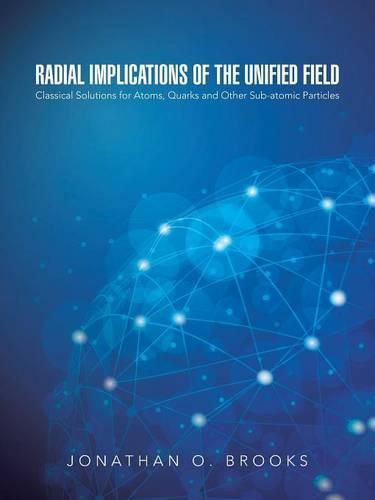Readings Newsletter
Become a Readings Member to make your shopping experience even easier.
Sign in or sign up for free!
You’re not far away from qualifying for FREE standard shipping within Australia
You’ve qualified for FREE standard shipping within Australia
The cart is loading…






This title is printed to order. This book may have been self-published. If so, we cannot guarantee the quality of the content. In the main most books will have gone through the editing process however some may not. We therefore suggest that you be aware of this before ordering this book. If in doubt check either the author or publisher’s details as we are unable to accept any returns unless they are faulty. Please contact us if you have any questions.
If you use quantum mechanics, teach quantum mechanics, or study chemistry, physics, or mathematics at any level you'll be fascinated by the classical discoveries that are revealed in Radial Implications of the Unified Field.
My book, Radial Implications of the Unified Field, was inspired by an equation that I derived for the separation of two similar steroidal materials by solvent extraction over fifty years ago. I defined a variable alpha that must always be less than unity. This variable a, which varies as the ratio (N-35) to (N-28), so that when N increases then a approaches unity. From this I derived for the radius, a new variable set, R = -10 a Ln (a) divided by Square root of (N+6). This defines the solution sets of orbital matrices which apply to all of the elements. A variable r in the Associated Legendre Equation, another source, which was supposedly a radius of the Schroedinger equation had to be divided into my variable in a to obtain all true radii. I first used it to find the .529 that replicates the radius of hydrogen. Because time evolution was zero I converted the vector Laplacian to the Poisson electron density. The Unified Field was inherent in the Rydberg equation; but not using kilogram test particles. You must use unit electron masses.
$9.00 standard shipping within Australia
FREE standard shipping within Australia for orders over $100.00
Express & International shipping calculated at checkout
This title is printed to order. This book may have been self-published. If so, we cannot guarantee the quality of the content. In the main most books will have gone through the editing process however some may not. We therefore suggest that you be aware of this before ordering this book. If in doubt check either the author or publisher’s details as we are unable to accept any returns unless they are faulty. Please contact us if you have any questions.
If you use quantum mechanics, teach quantum mechanics, or study chemistry, physics, or mathematics at any level you'll be fascinated by the classical discoveries that are revealed in Radial Implications of the Unified Field.
My book, Radial Implications of the Unified Field, was inspired by an equation that I derived for the separation of two similar steroidal materials by solvent extraction over fifty years ago. I defined a variable alpha that must always be less than unity. This variable a, which varies as the ratio (N-35) to (N-28), so that when N increases then a approaches unity. From this I derived for the radius, a new variable set, R = -10 a Ln (a) divided by Square root of (N+6). This defines the solution sets of orbital matrices which apply to all of the elements. A variable r in the Associated Legendre Equation, another source, which was supposedly a radius of the Schroedinger equation had to be divided into my variable in a to obtain all true radii. I first used it to find the .529 that replicates the radius of hydrogen. Because time evolution was zero I converted the vector Laplacian to the Poisson electron density. The Unified Field was inherent in the Rydberg equation; but not using kilogram test particles. You must use unit electron masses.